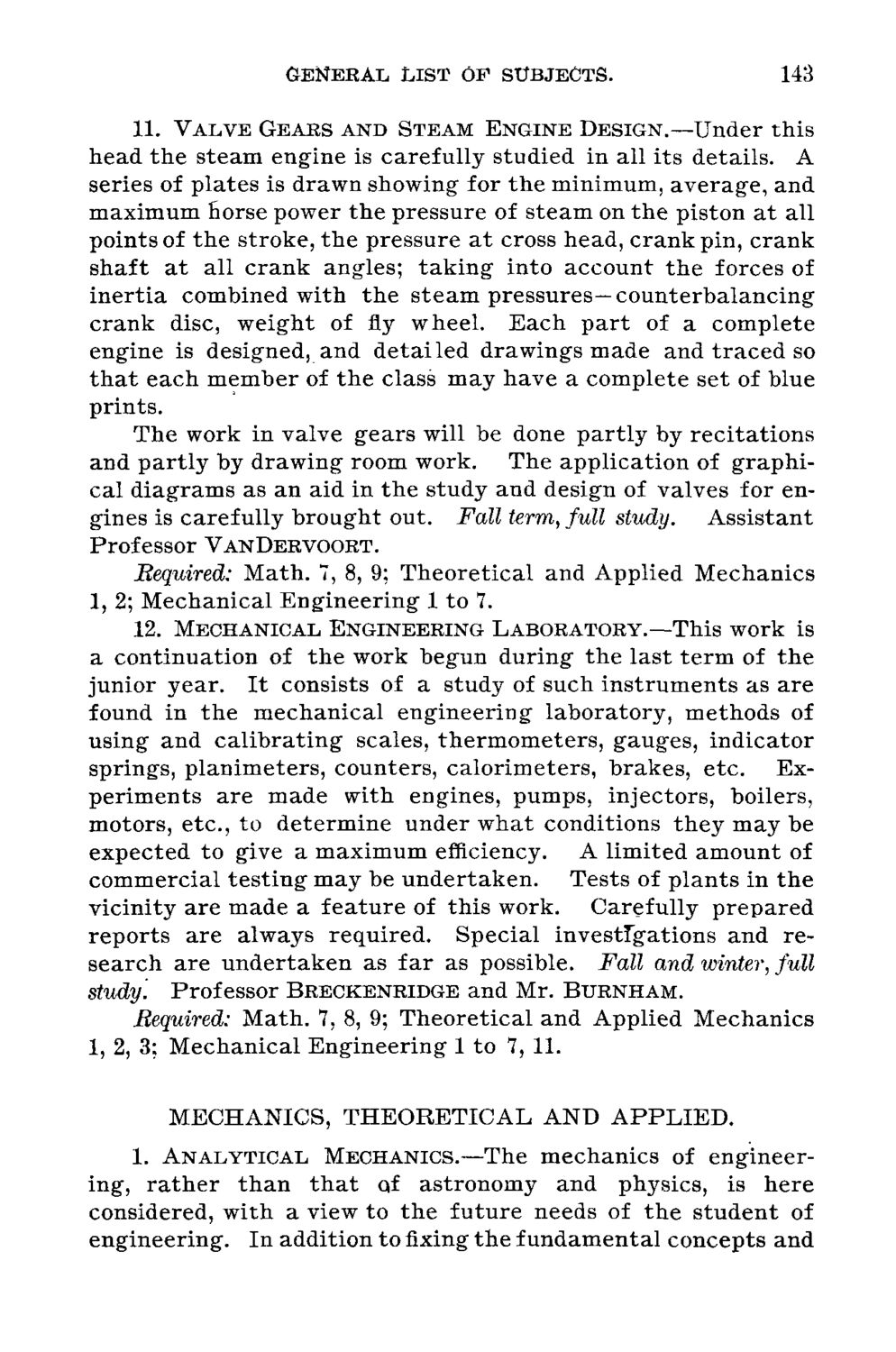| |
| |
Caption: Course Catalog - 1894-1895
This is a reduced-resolution page image for fast online browsing.

EXTRACTED TEXT FROM PAGE:
GENERAL LIST OF SUBJECTS. 143 11. VALVE GEAHS AND STEAM ENGINE DESIGN.—Under this head the steam engine is carefully studied in all its details. A series of plates is drawn showing for the minimum, average, and maximum horse power the pressure of steam on the piston at all points of the stroke, the pressure at cross head, crank pin, crank shaft at all crank angles; taking into account the forces of inertia combined with the steam pressures—counterbalancing crank disc, weight of fly wheel. Each part of a complete engine is designed, and detailed drawings made and traced so that each member of the class may have a complete set of blue prints. The work in valve gears will be done partly by recitations and partly by drawing room work. The application of graphical diagrams as an aid in the study and design of valves for engines is carefully brought out. Fall term, full study. Assistant Professor VANDERVOORT. Required: Math. 7, 8, 9; Theoretical and Applied Mechanics 1, 2; Mechanical Engineering 1 to 7. 12. MECHANICAL ENGINEERING LABORATORY.—This work is a continuation of the work begun during the last term of the junior year. I t consists of a study of such instruments as are found in the mechanical engineering laboratory, methods of using and calibrating scales, thermometers, gauges, indicator springs, planimeters, counters, calorimeters, brakes, etc. Experiments are made with engines, pumps, injectors, boilers, motors, etc., to determine under what conditions they may be expected to give a maximum efficiency. A limited amount of commercial testing may be undertaken. Tests of plants in the vicinity are made a feature of this work. Carefully prepared reports are always required. Special investigations and research are undertaken as far as possible. Fall and winter, full study. Professor BRECKENRIDGE and Mr. BURNHAM. Required: Math. 7, 8, 9; Theoretical and Applied Mechanics 1, 2, 3; Mechanical Engineering 1 to 7, 11. MECHANICS, THEORETICAL AND APPLIED. 1. ANALYTICAL MECHANICS.—The mechanics of engineer- ing, rather than that of astronomy and physics, is here considered, with a view to the future needs of the student of engineering. In addition to fixing the fundamental concepts and
| |